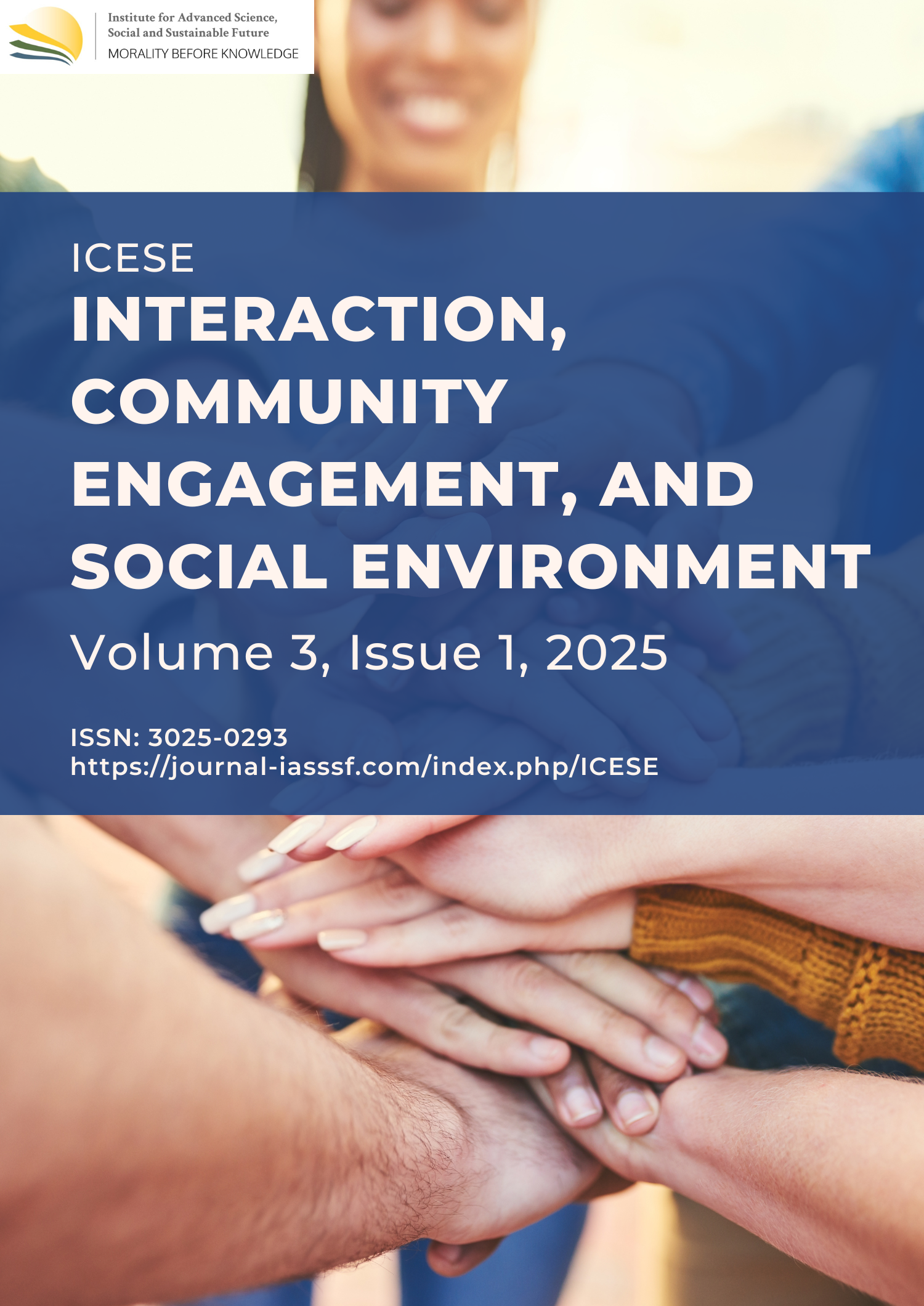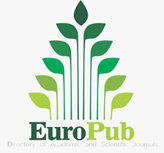Exploring the role of biogas systems in sustainable waste conversion and household energy supply
DOI:
https://doi.org/10.61511/icese.v3i1.2025.1819Keywords:
biogas, systema 20 model biodigester, biofertiliser, waste-to-energy, food security, climate mitigationAbstract
Background: Systema 20 Model biodigesters were installed at Tsangano Market in Malawi and are being promoted all over the country. However, there is limited field-based proof to support their technical performance and social and environmental benefits. Therefore, this study assessed the technical performance of the biodigester and its community benefits. Methods: The study used a mixed-methods approach. Waste composition analysis involved randomly collecting and segregating 835.17 kg of market waste to determine its constituents; direct measurements of feedstock and water inputs and biogas and liquid biofertilizer yields were conducted using calibrated tools; household surveys (n = 385) and focus group discussions were conducted to examine cooking fuel use and firewood displacement by biogas; indoor emission reductions were estimated using WHO air quality guidelines; methane reductions were calculated using IPCC (2006) methods; and laboratory analysis and field experiments were conducted to assess biofertilizer quality and its effect on maize production. Findings: Organic waste accounted for 99.9% of market waste; biodigester produced 12 m³ of biogas and 548 litres of biofertiliser daily, with an operational efficiency of 57.7%; the plant has the potential to support 13 households with clean cooking fuel, displacing 37.1 tonnes of firewood annually and reducing indoor PM2.5 from over 300 µg/m³ to below 50 µg/m³; the system diverted 50.4 tonnes of organic waste yearly, avoiding 28.05 tonnes of CO₂-equivalent emissions; and the biofertiliser (200.02 m³/year) had the potential to produce 16 tonnes of maize annually, although it performed better under irrigation than rain-fed farming. Conclusion: The Systema 20 biodigester is a promising solution to waste, energy, and environmental challenges at the community level. However, further research is needed to address biodigester efficiency and sustainability bottlenecks. Novelty/Originality of this article: This study offers the first integrated field-based assessment of a market-scale biodigester in Malawi, linking energy production, environment, and food security.
References
Acheampong, A. O., Opoku, E. E. O., Amankwaa, A., & Dzator, J. (2024). Energy poverty and gender equality in education: Unpacking the transmission channels. Technological Forecasting and Social Change, 202, 123274. https://doi.org/10.1016/j.techfore.2024.123274
Adetola, O. O., Layade, K. T., Oyediji, O. T., Akinyemi, O. E., Adaaja, B. O., Adegboyega, D. A., & Arabambi, I. O. (2021). Biodegradable wastes: An alternative clean energy source. International Journal of Advanced Technology & Science Research, 2(3), 175-181. https://www.ijatsr.org/view-issue?volume=2&issue=3
Akinbami, J. F., Ilori, M. O., Oyebisi, T. O., Akinwumi, I. O., & Adeoti, O. (2001). Biogas energy use in Nigeria: current status, future prospects and policy implications. Renewable and Sustainable Energy Reviews, 5(1), 97-112. https://doi.org/10.1016/S1364-0321(00)00005-8
Alburquerque, J. A., de la Fuente, C., & Bernal, M. P. (2012). Chemical properties of anaerobic digestates affecting C and N dynamics in amended soils. Agriculture, ecosystems & environment, 160, 15-22. https://doi.org/10.1016/j.agee.2011.03.007
Amankwah, A., Ambel, A., Gourlay, S., Kilic, T., Markhof, Y., & Wollburg, P. (2024). Fertiliser price shocks in smallholder agriculture cross-country evidence from high-frequency phone surveys in Sub-Saharan Africa. http://www.worldbank.org/prwp
Bovolo, I., Cecere, G., & Ghisetti, C. (2021). Urban waste management and circular economy: Measuring the policy mix. Ecological Economics, 189, 107142. https://doi.org/10.1016/j.ecolecon.2021.107142
Budiyono, Manthia, F., Amalin, N., Matin, H. H. A., & Sumardiono, S. (2018). Production of biogas from organic fruit waste in anaerobic digester using ruminant as the inoculum. In MATEC Web of Conferences (Vol. 156, p. 03053). EDP Sciences. https://doi.org/10.1051/matecconf/201815603053
Chikukula, A. A., Omokaro, G. O., Godswill, O. O., Cassim, S. Y., Mabangwe, H. S., & Kaisi, I. (2024). Problems and possible solutions to municipal solid waste management in Malawi urban areas–an overview. Asian Journal of Environment & Ecology, 23(6), 42-52. https://doi.org/10.9734/AJEE/2024/v23i6553
Cogut, A. (2016). Open burning of waste: a global health disaster. R20 Regions of climate action, 20. https://dokumen.tips/documents/open-burning-of-waste-a-global-health-disaster-iii-executive-summary-waste-is-a.html
Creswell, J. W., & Creswell, J. D. (2018). Research Design: Qualitative, Quantitative, and Mixed Methods Approaches (5th ed.). SAGE Publications.
Ehimen, E. A., Sandula, P. Y., Robin, T., & Gamula, G. T. (2023). Improving energy access in low-income sub-saharan african countries: A case study of Malawi. Energies, 16(7), 3106. https://doi.org/10.3390/en16073106
Ellen MacArthur Foundation. (2013). Towards the circular economy: Economic and business rationale for an accelerated transition. Ellen MacArthur Foundation. https://www.ellenmacarthurfoundation.org/publications/towards-the-circular-economy-vol-1-an-economic-and-business-rationale-for-an-accelerated-transition
ESMAP. (2023). Tracking SDG7: The energy progress report 2023. Energy Sector Management Assistance Program (World Bank). https://trackingsdg7.esmap.org
FAO. (2013). Good agricultural practices for greenhouse vegetable production. Food and Agriculture Organization of the United Nations. https://www.fao.org/publications/card/en/c/5da49d8f-7113-5b05-bc5c-d07f13686f4f/
FAO. (2018). Measuring greenhouse gas emissions from livestock. Food and Agriculture Organization of the United Nations.
FAO. (2023). Scaling-up bioenergy and bioeconomy solutions for climate-smart agriculture in Eastern Africa: Status, challenges and opportunities. Food and Agriculture Organization of the United Nations.
Ferronato, N., & Torretta, V. (2019). Waste mismanagement in developing countries: A review of global issues. International journal of environmental research and public health, 16(6), 1060. https://doi.org/10.3390/ijerph16061060
Geissdoerfer, M., Savaget, P., Bocken, N. M. P., & Hultink, E. J. (2017). The circular economy – A new sustainability paradigm? Journal of Cleaner Production, 143, 757–768. https://doi.org/10.1016/j.jclepro.2016.12.048
Gono, H., & Takane, T. (2019). Impact of subsidized fertilizer price increase on rural livelihood: A case study in Southern Malawi. International Journal of Development and Sustainability, 8(2), 132-140. https://isdsnet.com/ijds-v8n2.html
Güngör-Demirci, G., & Demirer, G. N. (2004). Effect of initial COD concentration, nutrient addition, temperature and microbial acclimation on anaerobic treatability of broiler and cattle manure. Bioresource Technology, 93(2), 109–117. https://doi.org/10.1016/j.biortech.2003.10.019
IEA. (2021). Renewables 2021: Analysis and forecast to 2026. International Energy Agency. https://www.iea.org/reports/renewables-2021
IPCC. (2006). 2006 IPCC guidelines for national greenhouse gas inventories. Intergovernmental Panel on Climate Change. https://www.ipcc-nggip.iges.or.jp/public/2006gl/
IRENA. (2022). Renewable energy outlook for Southern Africa: Zambia spotlight. International Renewable Energy Agency. https://www.irena.org/Publications/2022/Jan/Renewable-Energy-Market-Analysis-Africa?source=email
IRENA. (2024). Renewable energy in Cities: Biogas and waste-to-energy options for the urban sector. International Renewable Energy Agency. https://www.irena.org
Komarek, A. M., Drogue, S., Chenoune, R., Hawkins, J., Msangi, S., Belhouchette, H., & Flichman, G. (2017). Agricultural household effects of fertilizer price changes for smallholder farmers in central Malawi. Agricultural Systems, 154, 168-178. https://doi.org/10.1016/j.agsy.2017.03.016
Kougias, P. G., & Angelidaki, I. (2018). Biogas and its opportunities—A review. Frontiers of Environmental Science & Engineering, 12(3), 14. https://doi.org/10.1007/s11783-018-1037-8
Longe, O. M. (2021). An assessment of the energy poverty and gender nexus towards clean energy adoption in rural South Africa. Energies, 14(12), 3708. https://doi.org/10.3390/en14123708
McCauley, D., Grant, R., & Mwathunga, E. (2022). Achieving energy justice in Malawi: from key challenges to policy recommendations. Climatic Change, 170(3), 28. https://doi.org/10.1007/s10584-022-03314-1
Milanzi, S. A., & Daw, D. (2018). The impact of electricity supply in Malawi on economic development. International Conference on Public Administration and Development Alternatives.
Mkondiwa, M., & Apland, J. (2022). Inter-district food flows in Malawi. Food Security, 14(6), 1553–1568. https://doi.org/10.1007/s12571-022-01302-y
Möller, K., & Müller, T. (2012). Effects of anaerobic digestion on digestate nutrient availability and crop growth: A review. Engineering in life sciences, 12(3), 242-257. https://doi.org/10.1002/elsc.201100085
Monsivais, P., Aggarwal, A., & Drewnowski, A. (2014). Time spent on home food preparation and indicators of healthy eating. American journal of preventive medicine, 47(6), 796-802. https://doi.org/10.1016/j.amepre.2014.07.033
Morgan, T. (2018). The socioeconomic impact of switching to LPG for cooking. A report to the World LPG Association. www.wlpga.org
Mubanga, J., Munkombwe, G., & Phiri, D. (2022). Bio-slurry from household biodigesters: Potential for food and soil improvement in Southern Africa. African Journal of Environmental Science and Technology, 16(7), 345–353. https://doi.org/10.5897/AJEST2022.3172
Mwirigi, J. W., Balana, B. B., Mugisha, J., Walekhwa, P. N., Melamu, R., Nakami, S., & Makenzi, P. (2014). Socio-economic hurdles to widespread adoption of small-scale biogas digesters in Sub-Saharan Africa: A review. Biomass and Bioenergy, 70, 17–25. https://doi.org/10.1016/j.biombioe.2014.02.002
Nazombe, H. (2022). Solid waste management in zomba city. University of Malawi. https://doi.org/10.13140/RG.2.2.12088.62720
Nguyen, C. P., & Su, T. D. (2021). Does energy poverty matter for gender inequality? Global evidence. Energy for Sustainable Development, 64, 35–45. https://doi.org/10.1016/j.esd.2021.07.003
NIRDA. (2021). Rwanda's national biogas program: Performance assessment. National Industrial Research and Development Agency. https://www.nirda.gov.rw/home/resources
Nkem, O. P., & Njoku, K. L. (2022). Biogas production from readily available organic wastes (cow dung, ram dung and corn peels) as a waste management strategy. FUW Trends in Science & Technology Journal, 7(1), 478 – 490. http://www.ftstjournal.com/
NSO. (2019). 2018 Malawi population and housing census: Main report. Zomba, Malawi. National Statistical Office. http://www.nsomalawi.mw
Nyondo, C., Nyirenda, Z. B., Burke, W. J., & Muyanga, M. (2021). The inorganic fertilizer price surge in 2021: Key drivers and policy options. Malawi Agricultural Policy Advancement and Transformation Agenda Institute (MwAPATA Institute). http://dx.doi.org/10.22004/ag.econ.329241
Okello, C., Pindozzi, S., & Boccia, L. (2021). Biogas technology diffusion in Sub-Saharan Africa: Evidence from Uganda. Renewable Energy, 164, 1216–1229. https://doi.org/10.1016/j.renene.2020.10.142
Patel, S., Mehta, B., & Chauhan, D. S. (2022). Comparative assessment of household-scale biogas plants in India: A case for performance, barriers, and sustainability. Energy for Sustainable Development, 68, 78–87. https://doi.org/10.1016/j.esd.2022.03.005
Rada, E. C. (2017). Waste mismanagement in developing countries: A case study of environmental contamination. Wastes: Solutions, Treatments and Opportunities, 1(1), https://doi.org/10.52793/wastes.v1i1.24
Rosenthal, J., Quinn, A., Grieshop, A. P., Pillarisetti, A., & Glass, R. I. (2018). Clean cooking and the SDGs: Integrated analytical approaches to guide energy interventions for health and environment goals. Energy for Sustainable Development, 42, 152–159. https://doi.org/10.1016/j.esd.2017.11.003
Sawyerr, N., Trois, C., Workneh, T. S., & Okudoh, V. (2019). An overview of biogas production: Fundamentals, applications and future research. International Journal of Energy Economics and Policy, 9(2), 105-116. https://doi.org/10.32479/ijeep.7375
Searle, S., Baldino, C., Pavlenko, N., Mock, P., Giuntoli, J., Carton, S., & Acke, D. (2018). What is the role for renewable methane in European decarbonization. International Council on Clean Transportation https://theicct.org/publication/what-is-the-role-for-renewable-methane-in-european-decarbonization/
SEforALL. (2023). Clean cooking delivery models: Innovations in biogas access. Sustainable Energy for All. https://www.seforall.org
Singh, J., Laurenti, R., Sinha, R., & Frostell, B. (2014). Progress and challenges to the global waste management system. Waste Management & Research, 32(9), 800-812. https://doi.org/10.1177/0734242X14537868
Tornel-Vázquez, R., Iglesias, E., & Loureiro, M. (2024). Adoption of clean energy cooking technologies in rural households: the role of women. Environment and Development Economics, 29(6), 499-517. https://doi.org/10.1017/S1355770X24000226
Trivedi, S., Chahar, O., & Mehta, K. (2015). Solid waste management using biogas technology. International Journal of Current Engineering and Technology, 5(4), 2742-2750. https://inpressco.com/category/ijcet/vol-5-no-4-aug-2015/
Uzodinma, E. O., Ofoefule, A. U., & Oparaku, O. U. (2014). The role of biogas in mitigating climate change. Nigerian Journal of Solar Energy, 25, 85-90. https://www.nigerianjournalsonline.com/
Wassie, Y. T., & Adaramola, M. S. (2020). Analysing household biogas utilization and impact in rural Ethiopia: Lessons and policy implications for sub-Saharan Africa. Scientific African, 9, e00474. https://doi.org/10.1016/j.sciaf.2020.e00474
WHO. (2014). Indoor air quality guidelines: Household fuel combustion. World Health Organization Press. https://www.who.int/publications/i/item/9789241548885
WHO. (2023). Health effects of poor sanitation and urban waste: Cholera and diarrhoea outbreaks. World Health Organization. https://www.who.int
World Bank. (2020). The state of access to modern energy cooking services. World Bank. https://documents.worldbank.org/en/publication/documents-reports/documentdetail/937141600195758792/
World Bank. (2023). Malawi urban development and sanitation review. World Bank Publications. https://documents.worldbank.org
WRAP. (2016). Digestate and compost in agriculture. WRAP UK.
Zade, P., Gadhade, Y., Mundhe, S., & Parakh, L. (2019). An alternative design for anaerobic digestion of food waste: Biogas production. International journal of basic and applied research, 9(8). http://www.pragatipublication.com/
Zhang, J., Du, H., Wang, T., Xiao, P., Lu, S., Zhao, G., ... & Li, G. (2024). Tracking the carbon flows in municipal waste management in China. Scientific Reports, 14(1), 1471. https://doi.org/10.1038/s41598-024-51698-0
Downloads
Published
How to Cite
Issue
Section
Citation Check
License
Copyright (c) 2025 Hope Baxter Chamdimba

This work is licensed under a Creative Commons Attribution 4.0 International License.















